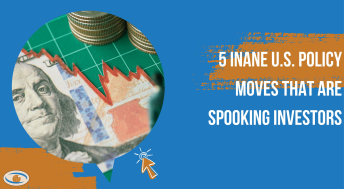Every individual that has ever invested money into something has experienced the emotions of regret after selling too soon, or of never buying in the first place, or of simply holding on for too long and never selling. These are all perfectly normal human behaviours that we face when investing because after all, our genetic makeup is all the same. We find that the best investors are those that are not only able to turn their emotions off, but also those that are able to introspectively view their own emotional biases and use that information to invest effectively. If a stock price is continuously increasing and never seems to fall back down, an investor acting on their impulses may look to buy it as it’s only going up, but the most rational investor would assess the information as to why it is going up and whether the price increases are sustainable and whether there is more room for growth. Below we are going to explore a few cognitive biases when investing.
Buying “Cheap” Stocks
Most beginner investors tend to avoid stocks that have a share price above $100, and they often lean towards stocks priced below $100. This is because intrinsically, without having any further information, we would be led to believe that a $10 stock is “cheaper” than a $1,000 stock. Investing in such a way is misleading though, as what is most important for the relative “expensiveness” of a stock is its market capitalization. Market capitalization, or often referred to as market cap, is the total value of a company, and it is calculated as price per share times the number of shares. We have outlined two stocks below, Markel Corporation and Sirius XM, that have a price per share of $1,319 and $6, respectively. Naturally, we might think of the $6 Sirius XM stock as being “cheaper” than Markel, however, its market cap of $25.9 billion is larger than that of Markel’s at $18.2 billion. The reason for this is that Sirius XM has 4 billion shares outstanding, whereas, Markel has only 13.8 million shares outstanding. Sirius XM is also more expensive on a valuation basis than Markel, with a P/E of 21.5X against 18.3X, respectively. This leads us to the conclusion that looking at share price independent of any other factor is misleading, and it should not really be factored into our investing decisions.
In fact, when we look at the previous one-year performance between both stocks, Markel at a price per share above $1,000 outperformed Sirius XM at less than $10 a share.
Anchoring Bias
The anchoring bias is when an investor uses their information from a previous experience with a stock as a reference point for any future data. An example of this is if an investor had the opportunity to buy Stock A at $100 one year ago but did not act upon it and currently the stock price is $300. That investor, now seeing that the price has tripled, may only wish to buy Stock A close to a price of $100, as that is when they first could have bought it. The investor might feel that a share price of $300 is too expensive and that the stock price should come down to $100, however, the investors’ previous experiences are irrelevant to the share price as the company has likely continued to grow and generate revenue and become a more profitable and valuable company.
Representativeness Bias
The representativeness bias is a misconception that future patterns will resemble past ones. An investor may identify an investment as being good or bad based on its most recent price performance. This is why increases and decreases in share prices can often become overextended. If the price of a stock continues to climb higher, then investors may feel that this pattern will persist into the future, and this drives the price up further. Vice versa when stock prices decrease, as investors may feel that they will only continue to fall further. This cognitive bias helps us to explain our general belief that the sign of a top in price is when investors feel that the stock can only go up and the price decreasing is not a possibility, and the sign of a bottom is when investors feel that the price can only decrease further, and no mentions of a rebound are in sight. These types of behaviours occurred at the bottom of the stock market in 2008 and 2020, as investors sought lower prices and were using the most recent performance as an indicator for the future.
Ending Thoughts
Our aim in writing on some of these biases is to constantly remind ourselves that we should strive to be as logical as possible when investing and that to achieve great returns in the market we must become aware of our own biases. After overcoming some of these biases, an individual can invest their money with a greater understanding of how to counteract some of these misleading human impulses.
Research for today, invest for tomorrow.

Disclosure: Analysts of 5iResearch responsible for this report do not have a financial or other interest in Markel Corporation (MKL) or Sirius XM (SIRI) but will not trade in shares within 48 hours after publishing this report. The i2i Fund does not have a financial or other interest in Markel Corporation (MKL) or Sirius XM (SIRI).






Comments
Login to post a comment.